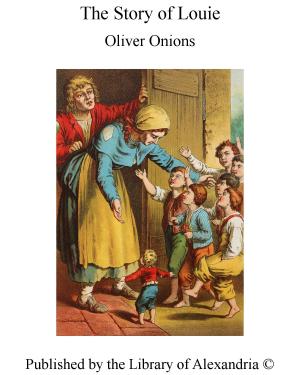| Author: | Aleksandr Ivanovich Kuprin | ISBN: | 9781465591609 |
| Publisher: | Library of Alexandria | Publication: | March 8, 2015 |
| Imprint: | Language: | English |
| Author: | Aleksandr Ivanovich Kuprin |
| ISBN: | 9781465591609 |
| Publisher: | Library of Alexandria |
| Publication: | March 8, 2015 |
| Imprint: | |
| Language: | English |
With us, you see, Kuprin makes the reporter Platonov, his mouthpiece, say in Yama, "they write about detectives, about lawyers, about inspectors of the revenue, about pedagogues, about attorneys, about the police, about officers, about sensual ladies, about engineers, about baritones—and really, by God, altogether well—cleverly, with finesse and talent. But, after all, all these people are rubbish, and their life is not life, but some sort of conjured up, spectral, unnecessary delirium of world culture. But there are two singular realities—ancient as humanity itself: the prostitute and the moujik. And about them we know nothing, save some tinsel, gingerbread, debauched depictions in literature..." Tinsel, gingerbread, debauched depictions... Let us consider some of the ways in which this monstrous reality has been approached by various writers. There is, first, the purely sentimental: Prevost's Manon Les caut. Then there is the slobberingly sentimental: Dumas' Dame aux Camelias. A third is the necrophilically romantic: Louys' Aphrodite. The fertile Balzac has given us no less than two: the purely romantic, in his fascinating portraits of the Fair Imperia; and the romantically realistic, in his Splendeurs et Miseres des Courtisanes. Reade's Peg Woffington may be called the literary parallel of the costume drama; Defoe's Moll Flanders is honestly realistic; Zola's Nana is rabidly so. There is one singular fact that must be noted in connection with the vast majority of such depictions. Punk or bona roba, lorette or drab—put her before an artist in letters, and, lo and behold ye! such is the strange allure emanating from the hussy, that the resultant portrait is either that of a martyred Magdalene, or, at the very least, has all the enigmatic piquancy of a Monna Lisa... Not a slut, but what is a hetaera; and not a hetaera, but what is well-nigh Kypris herself! I know of but one depiction in all literature that possesses the splendour of implacable veracity as well as undiminished artistry; where the portrait is that of a prostitute, despite all her tirings and trappings; a depiction truly deserving to be designated a portrait: the portrait supreme of the harlot eternal—Shakespeare's Cleopatra.
With us, you see, Kuprin makes the reporter Platonov, his mouthpiece, say in Yama, "they write about detectives, about lawyers, about inspectors of the revenue, about pedagogues, about attorneys, about the police, about officers, about sensual ladies, about engineers, about baritones—and really, by God, altogether well—cleverly, with finesse and talent. But, after all, all these people are rubbish, and their life is not life, but some sort of conjured up, spectral, unnecessary delirium of world culture. But there are two singular realities—ancient as humanity itself: the prostitute and the moujik. And about them we know nothing, save some tinsel, gingerbread, debauched depictions in literature..." Tinsel, gingerbread, debauched depictions... Let us consider some of the ways in which this monstrous reality has been approached by various writers. There is, first, the purely sentimental: Prevost's Manon Les caut. Then there is the slobberingly sentimental: Dumas' Dame aux Camelias. A third is the necrophilically romantic: Louys' Aphrodite. The fertile Balzac has given us no less than two: the purely romantic, in his fascinating portraits of the Fair Imperia; and the romantically realistic, in his Splendeurs et Miseres des Courtisanes. Reade's Peg Woffington may be called the literary parallel of the costume drama; Defoe's Moll Flanders is honestly realistic; Zola's Nana is rabidly so. There is one singular fact that must be noted in connection with the vast majority of such depictions. Punk or bona roba, lorette or drab—put her before an artist in letters, and, lo and behold ye! such is the strange allure emanating from the hussy, that the resultant portrait is either that of a martyred Magdalene, or, at the very least, has all the enigmatic piquancy of a Monna Lisa... Not a slut, but what is a hetaera; and not a hetaera, but what is well-nigh Kypris herself! I know of but one depiction in all literature that possesses the splendour of implacable veracity as well as undiminished artistry; where the portrait is that of a prostitute, despite all her tirings and trappings; a depiction truly deserving to be designated a portrait: the portrait supreme of the harlot eternal—Shakespeare's Cleopatra.















